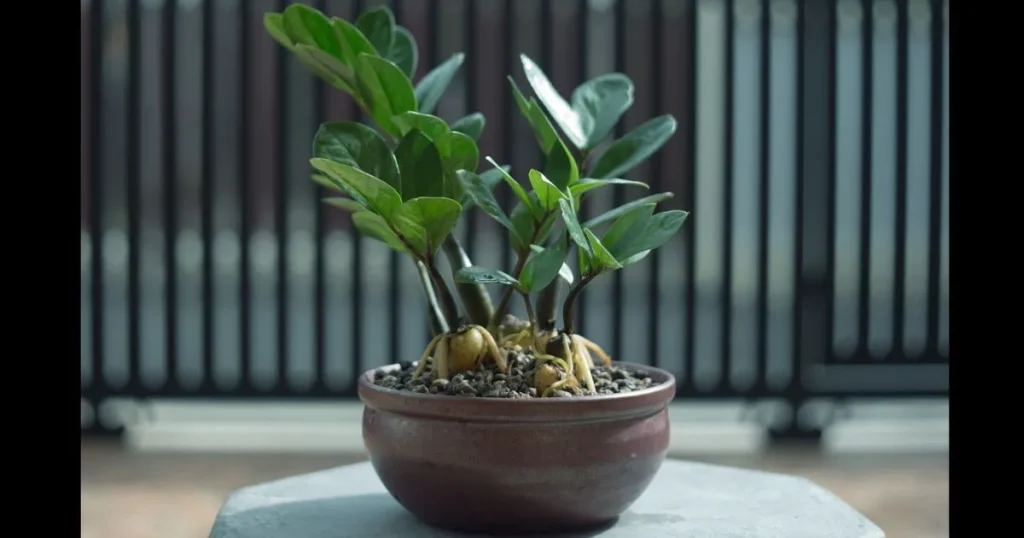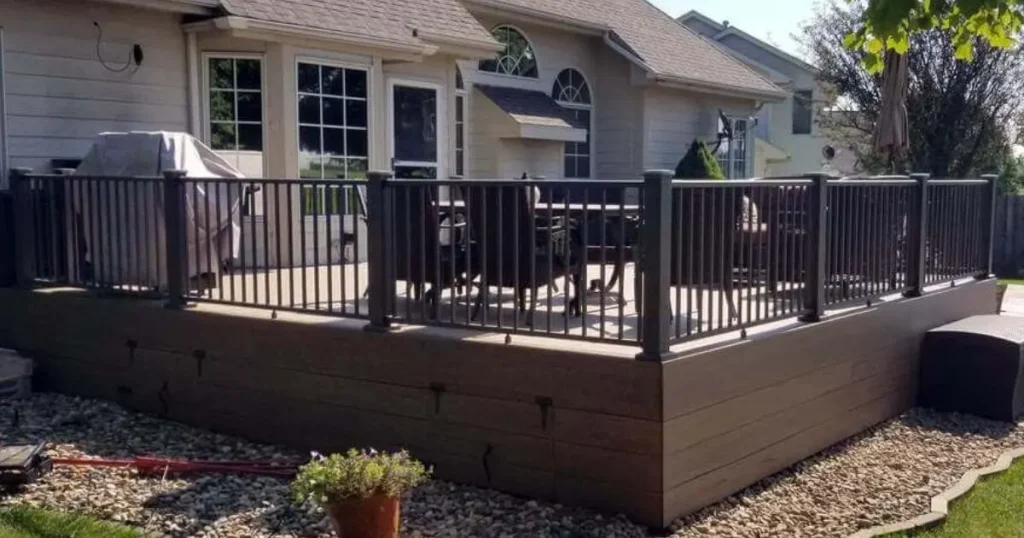ZZ plants, scientifically known as Zamioculcas Zamiifolia, are popular indoor plants valued for their attractive foliage and easy maintenance. These plants are native to Eastern Africa and belong to the Araceae family. One of the critical attractions of ZZ plants is their ability to be propagated easily, allowing plant enthusiasts to expand their collection or share these plants with others.
Propagation refers to the process of creating new plants from existing ones. With ZZ plants, propagation can be done through various methods such as stem cuttings, leaf cuttings, and division. Each method has its requirements and procedures, making it accessible for beginner and experienced gardeners.
When to Propagate ZZ Plant
The best time to propagate ZZ plant is during the spring and summer months when the plant is actively growing. This period provides optimal conditions for developing new roots and propagating plants’ growth. Avoid propagating ZZ plant during the dormant winter months, as they may not root as successfully.
What You’ll Need
Required Equipment and Tools
- Sharp, sterilized pruning shears or scissors for cutting plant parts.
- Clean containers or pots with drainage holes for planting cuttings or divisions.
- Potting mix suitable for ZZ plants, preferably well-draining to prevent waterlogging.
- A watering can or spray bottle maintains moisture levels during propagation.
Necessary Materials
- Stem or leaf cuttings from healthy ZZ plants for propagation.
- Rooting hormone (optional but can aid in faster root development).
- Perlite or sand is used to improve soil drainage if necessary.
- Water for watering propagated plants as needed.
How to Propagate ZZ Plant From Stem Cutting
Propagating ZZ plants through stem cuttings is a straightforward and rewarding method that allows you to create new plants from healthy stems. Here’s a step-by-step guide on how to propagate ZZ plant using stem cuttings:
1. Taking Stem Cuttings
To begin with, select a healthy ZZ plant with strong stems for cutting. Using sharp, clean scissors or pruning shears, cut a stem that is at least 6 inches long. Ensure that the stem has several healthy leaves and nodes, the points where roots will form.
2. Placing Cuttings in Water
After taking the stem cuttings:
- Remove leaves from the stem’s lower part to expose the nodes.
- Place the cut end of the stem in a container filled with clean, room-temperature water.
- Ensure that at least one or two nodes are submerged in the water.
- Change the water every few days to keep it fresh and prevent bacterial growth.
3. Repotting with Developed Roots
After a few weeks, you will notice roots starting to grow from the nodes of the stem cuttings. Once the roots are about 1-2 inches long and well-developed, it’s time to repot the cuttings. Choose a small pot with well-draining soil suitable for ZZ plants. Gently remove the cuttings from the water and plant them in the soil, ensuring the roots are covered and the stem stable. Water the newly potted cuttings lightly to settle the soil around the roots.
Benefits of Stem Cutting Propagation
Stem-cutting propagation offers several advantages for ZZ plant enthusiasts. It allows you to create multiple plants from a single healthy specimen, ensuring a steady supply of these beautiful plants for your home or garden. Additionally, propagating ZZ plants through stem cuttings is relatively easy and doesn’t require specialized equipment, making it accessible to beginners and experienced gardeners alike.
How to Propagate ZZ Plant From Leaf Cutting
Propagation of ZZ plants through leaf cuttings is a simple yet effective method. Here’s a detailed guide on how to do it:
Taking Leaf Cuttings
To start:
- Choose a healthy ZZ plant leaf to cut.
- Use a sharp, clean pair of scissors or gardening shears to cut the leaf from the plant.
- For optimal results, make sure the leaf is at least 4-6 inches long.
Planting Cuttings in Soil
After taking the leaf cuttings, allow them to dry and callus for a day or two. This step helps prevent rotting when planted in soil. Once the cut ends have been calloused, prepare a pot with a well-draining potting mix. Make small holes in the soil and gently insert the leaf cuttings, ensuring that at least one node (where roots will grow) is below the soil surface.
Watering Guidelines
After planting the leaf cuttings, water the soil lightly to settle it around the cuttings. Be careful not to overwater, as soggy soil can lead to rot. Keep the soil lightly moist but not wet throughout the propagation process. You can use a spray bottle to mist the soil occasionally to maintain humidity around the cuttings.
Care Tips for Leaf Cuttings
- Place the pot with leaf cuttings in a warm, bright location with indirect sunlight. Avoid placing them in direct sunlight, as it can scorch the leaves.
- Check the soil’s moisture regularly and use water to keep it lightly moistened.
- Patience is vital during leaf-cutting propagation. It may take several weeks to months for roots to develop and new growth to appear.
- Once roots have formed and new growth is visible, you can gradually acclimate the new plants to regular watering and care routines.
How to Propagate ZZ Plant From Division
The division is a reliable method for propagating ZZ plants. It allows you to create new plants from existing ones. This section will guide you through the process, ensuring a successful propagation experience.
Removing the Plant from its Pot
The first step in division propagation is carefully removing the ZZ plant from its pot. Choose a healthy and mature plant for division. Gently tip the pot to one side, supporting the base of the plant as you ease it out. Avoid pulling on the stems or leaves to prevent damage.
Dividing Clumps of Rhizomes
Once the plant is out of the pot, inspect the root system. ZZ plants grow from rhizomes, thick, fleshy stems that store water and nutrients. You’ll notice clumps of rhizomes connected. Carefully divide these clumps into sections using a clean and sharp knife or gardening shears. Each section should have at least one healthy rhizome and a few leaves attached.
Repotting New Plants
After dividing the rhizomes, it’s time to repot the new plants. Choose containers slightly larger than the divided sections to allow room for growth. Fill the pots with a well-draining potting mix, preferably a mix designed for succulents or cacti. Plant each divided section in its pot, ensuring the rhizome is covered with soil and the leaves are above the soil line.
Why Division Propagation Works
Division propagation works well for ZZ plants because it allows you to create multiple plants from a single mature plant. Each new plant retains the genetic characteristics of the parent plant, ensuring uniformity in appearance and growth patterns. This method is beneficial for rejuvenating overcrowded or leggy ZZ plants.
Care Tips for Newly Divided ZZ Plants
After repotting the new plants, please provide proper care to encourage healthy growth. Place the pots in a location with bright, indirect light, as direct sunlight can scorch the leaves. Water the plants sparingly, allowing the soil to dry out slightly between waterings. ZZ plants are drought-tolerant and prefer to dry out between waterings rather than staying constantly moist.
Can I Propagate a ZZ Plant?
Suitability for Propagation
ZZ plants are popular houseplants due to their low maintenance and resilience. They can be propagated successfully, making them a favorite among plant enthusiasts looking to expand their collection or share plants with friends. Propagation is generally straightforward with ZZ plants, making them suitable candidates for beginners and experienced gardeners.
Tips for Successful Propagation
1. Choose Healthy Plants: Start with a healthy ZZ plant showing no disease or stress signs. Healthy plants are more likely to propagate successfully.
2. Use Sharp Tools: When taking cuttings or dividing the plant, use sharp and clean tools to ensure clean cuts and minimize damage to the plant.
3. Optimal Timing: Propagate ZZ plants during their active growth phase, typically in spring or early summer, for the best results.
4. Provide Adequate Light: Place propagated plants in a location with indirect sunlight to encourage healthy growth without risking sunburn.
5. Regular Monitoring: Check on propagated plants regularly for signs of growth, root development, and overall health. Adjust care as needed.
Care Tips for Propagated ZZ Plants
Transplanting Guidelines
When transplanting propagated ZZ plants, follow these guidelines for optimal growth and health:
1. Choose the Right Pot: Select a pot with drainage holes and a size slightly larger than the plant’s current container to allow room for growth.
2. Use Well-Draining Soil: To prevent waterlogging and root rot, use a well-draining potting mix suitable for houseplants.
3. Transplant Carefully: Gently remove the plant from its current pot, being mindful of the roots. Please place it in the new pot and fill it with soil, pressing lightly to secure the plant.
4. Water Thoroughly: Water the plant thoroughly after transplanting, but avoid overwatering. Allow the soil to dry slightly between waterings.
Soil, Light, and Temperature Requirements
ZZ plants thrive in specific conditions, and providing the right environment is crucial to their health:
1. Soil: Use a well-draining, peat-based potting mix for ZZ plants. Avoid heavy soils that retain water excessively.
2. Light: ZZ plants prefer bright, indirect light but can tolerate low light conditions. Avoid direct sunlight, as it can scorch their leaves.
3. Temperature: Keep ZZ plants in a warm environment with temperatures between 65-75°F (18-24°C) during the day and slightly more relaxed at night.
Watering Techniques
Proper watering is essential for ZZ plants’ health and growth:
1. Water Sparingly: ZZ plants are drought-tolerant and prefer slightly dry conditions. Water only when the top inch of soil is dry to the touch.
2. Avoid Overwatering: Overwatering can lead to root rot and other issues. Allow excess water to drain from the pot; never let the plant sit in water.
3. Use Room-Temperature Water: Use room-temperature water to avoid shocking the plant’s roots. Rainwater or filtered water is ideal, as it reduces the risk of mineral buildup.
Troubleshooting ZZ Plant Issues
ZZ plants are generally low maintenance but can encounter a few problems that require attention. Here are some common issues and solutions to help you keep your ZZ plant healthy and thriving.
Dying after Repotting
If your ZZ plant starts to decline after repotting, it could be due to several factors. One common reason is a shock from the transition to a new pot or soil. To address this issue:
- Ensure the new pot has proper drainage to prevent waterlogging.
- Use well-draining soil designed explicitly for succulents to avoid root rot.
- Gradually acclimate the plant to its new environment by slowly increasing sunlight exposure and watering frequency.
Overwatering Signs
Overwatering is a common mistake that can harm ZZ plants. Signs of overwatering include:
- Yellowing or browning of leaves
- Wilting or mushy stems
- Foul odor from the soil
To remedy overwatering:
- Allow the soil to dry out between waterings to prevent root rot.
- Adjust your watering schedule based on the plant’s needs and environmental conditions.
- Use a moisture meter or check the soil’s moisture level with your finger before watering.
Light and Pest Issues
Insufficient light or pest infestations can also impact ZZ plants. Here’s what to watch for and how to address these issues:
- Light Issues: ZZ plants prefer indirect sunlight but can tolerate low light conditions. If your plant shows signs of etiolation (elongated, weak growth), move it to a brighter location.
- Pest Infestations: Common pests that can affect ZZ plants include mealybugs and spider mites. Regularly inspect your plant for signs of pests and treat them promptly with neem oil or insecticidal soap.
Propagating ZZ plants can be a rewarding experience with proper care and attention to potential issues. Providing the right conditions, including well-draining soil, appropriate watering, and suitable light levels, is essential. By promptly addressing common problems like overwatering, light issues, and pest infestations, you can ensure the health and longevity of your ZZ plant.
Frequently Asked Questions (FAQs)
Can I propagate a ZZ plant from a single leaf?
Yes, ZZ plants can be propagated from single-leaf cuttings. Ensure the leaf has a portion of the stem attached and follow proper planting and watering techniques for successful propagation.
How long does it take for ZZ plant cuttings to root?
The rooting time for ZZ plant cuttings can vary but typically ranges from a few weeks to a couple of months, depending on temperature, humidity, and care provided.
What are the best conditions for ZZ plant propagation?
Ideal conditions for ZZ plant propagation include well-draining soil, indirect sunlight, moderate watering (allowing the soil to dry slightly between waterings), and temperatures between 65-75°F (18-24°C).
Can I propagate a ZZ plant in water?
Yes, ZZ plants can be propagated in water by placing stem or leaf cuttings in clean water containers. Change the water regularly to prevent stagnation and monitor root development.
How often should I repot propagated ZZ plants?
Repot propagated ZZ plants when their roots have filled the current container, usually every 1-2 years. Use fresh, well-draining soil and a slightly larger pot to accommodate growth.
What should I do if my ZZ plant shows signs of distress after propagation?
If your ZZ plant exhibits issues like yellowing leaves, wilting, or pest infestations after propagation, assess the watering, light, and soil conditions. Adjust as needed and address any pests promptly using suitable methods.
Can I propagate a ZZ plant during winter?
While ZZ plants can be propagated year-round, it’s generally best to avoid propagation during extreme temperature fluctuations or when the plant is dormant, such as in the winter months.
How can I encourage faster growth in propagated ZZ plants?
To promote faster growth in propagated ZZ plants, provide optimal growing conditions, including adequate light, appropriate watering, regular fertilization during the growing season, and occasional pruning to encourage branching.
Are there any special considerations for propagating variegated ZZ plants?
Variegated ZZ plants may require slightly different care during propagation, such as avoiding direct sunlight to prevent leaf burn and ensuring consistent moisture without overwatering to maintain variegation.
What are some signs that my ZZ plant cuttings are rooting successfully?
Signs of successful rooting in ZZ plant cuttings include the development of white, healthy roots visible in the water or soil, new growth emerging from the cuttings, and an overall healthy appearance without wilting or yellowing.
- Top 12 Essential Gardening Tools for Beginners - June 19, 2024
- Top Gardening Tips for Beginners in 2024 - June 8, 2024
- How To Grow And Care For Peace Lily - April 28, 2024



